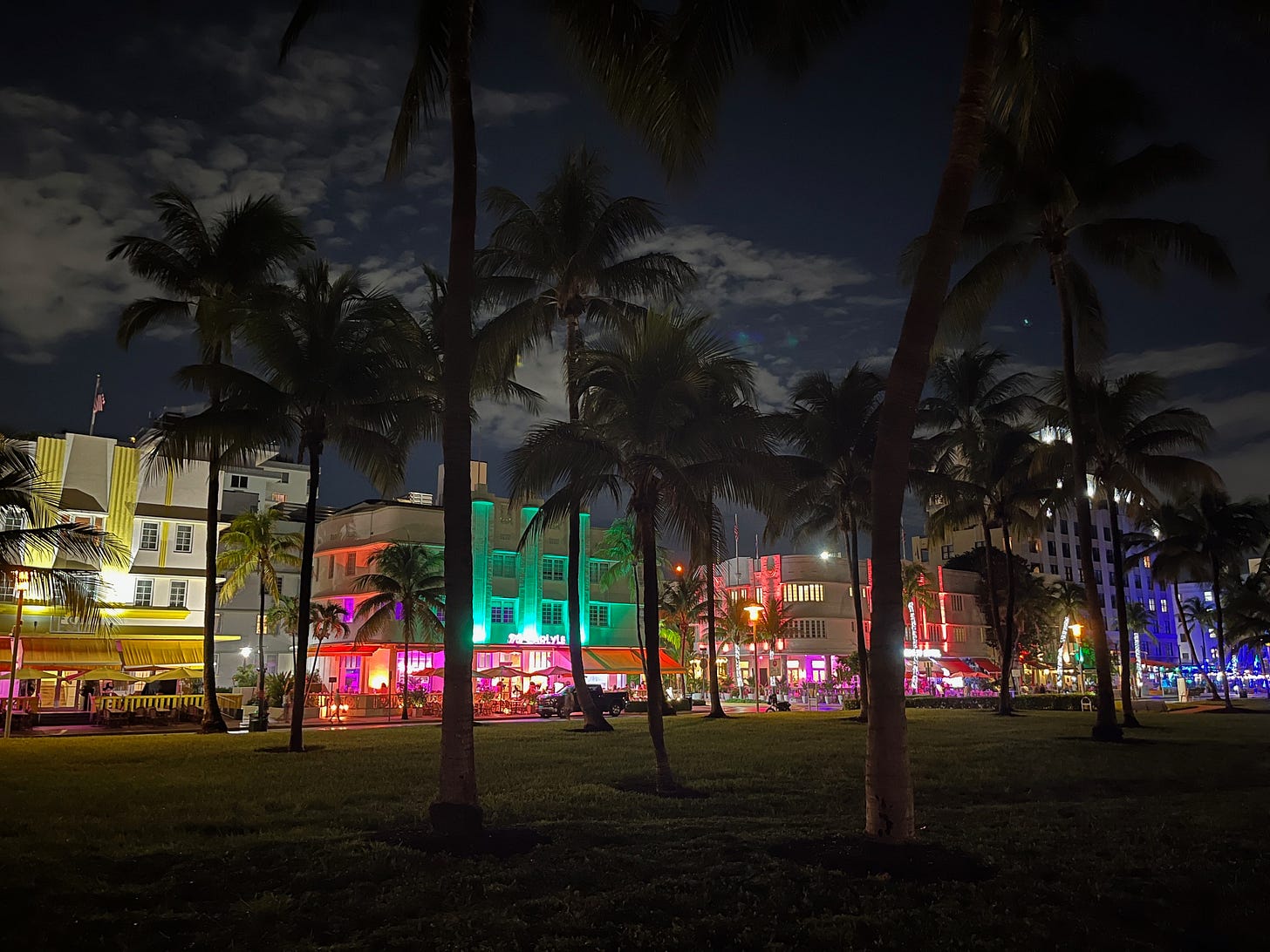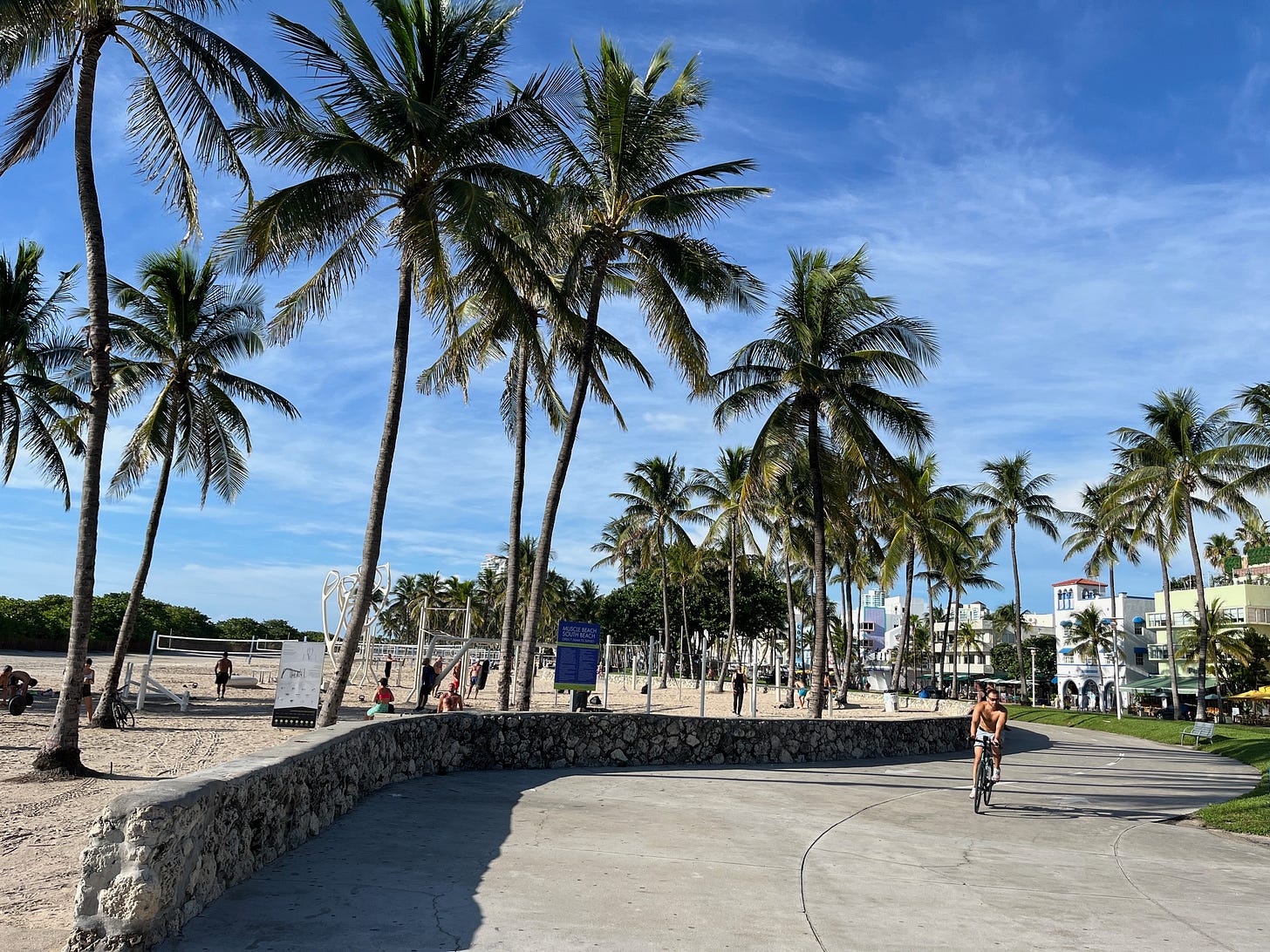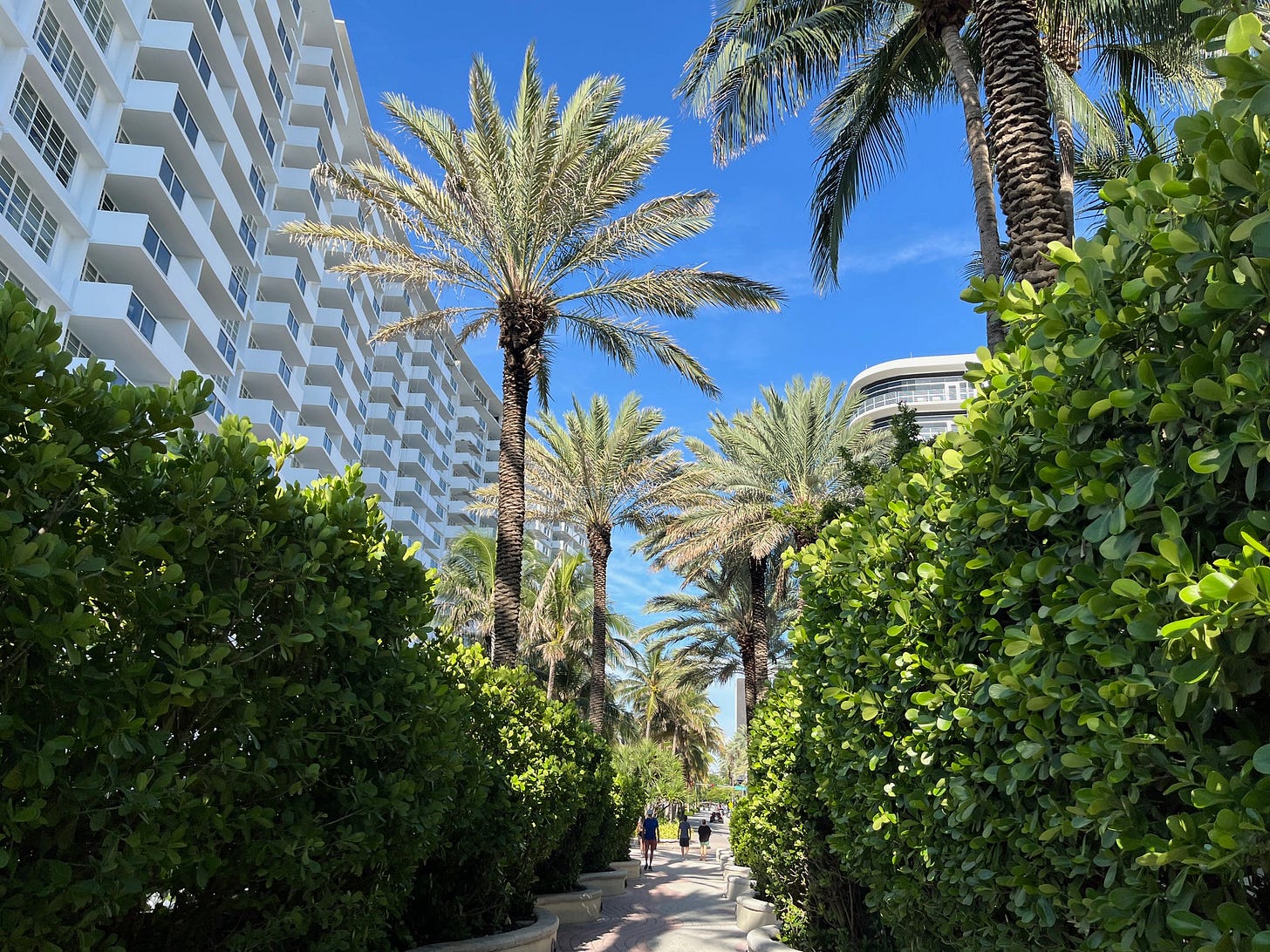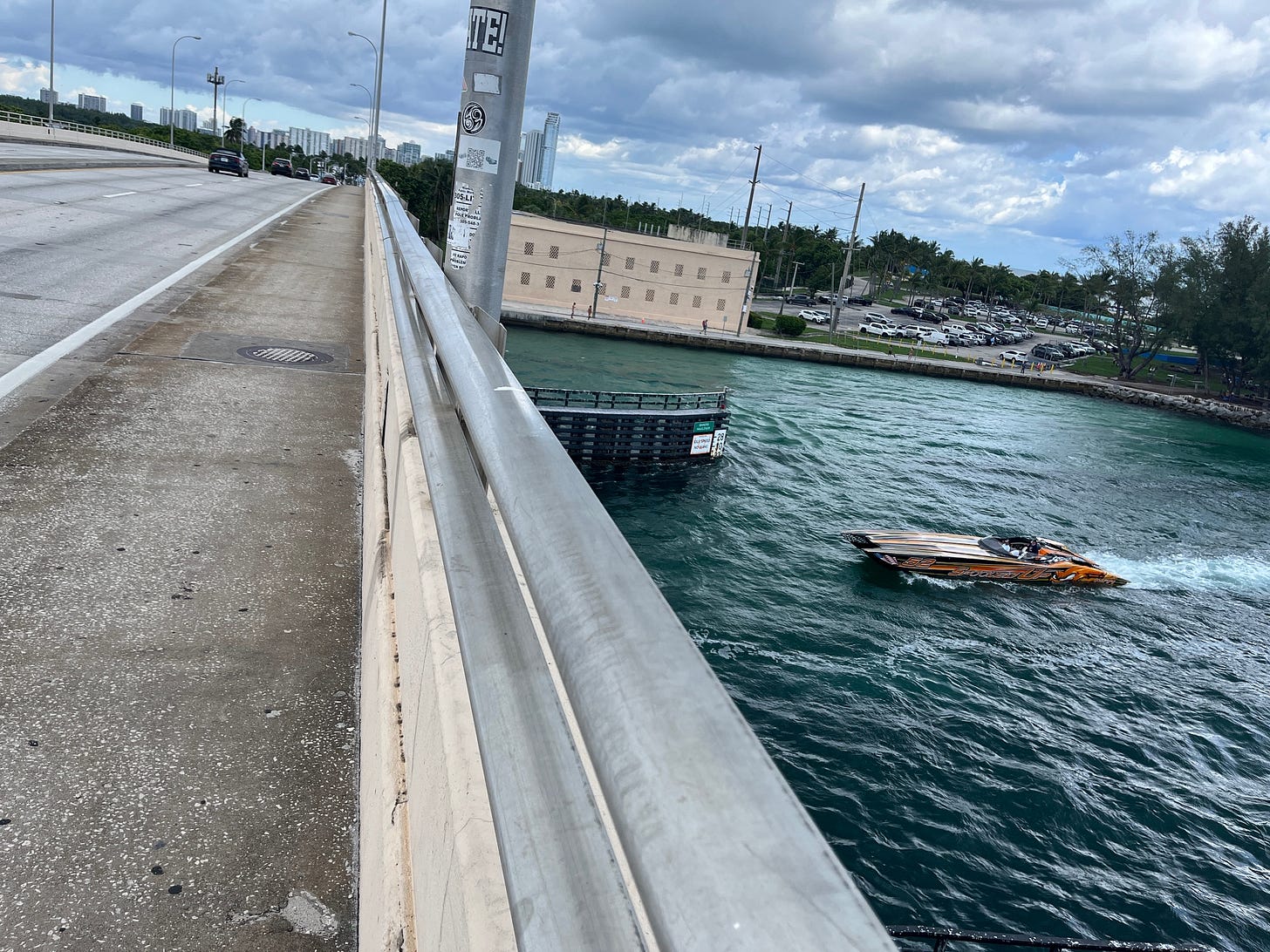I’m guessing that a couple of you are currently thinking about sand, sun, and mojitos right now. Even with America’s air travel system breaking down after months of traffic controller overwork and underpayment, millions of Northern Hemisphere dwellers are still planning equatorial escapes for January and February. For those of you who want to strike that special balance of reveling in Vitamin D and doing something different, I want to use this week’s newsletter to offer an idea, and rekindle a classic Moss series.
Back in 2023, I wrote a bunch of field dispatches called Hike Every City. It was exactly what it sounded like—first person primers on how to take great hike across a city. We explored bushy mountain bike trails in Philly, the unsung gargantuan green spaces in New York that make Central Park look svelte, and Rhode Island heritage foods like hot wieners and “cabinet” milkshakes. In fact, I’ve spent much of the last two years doing more city reporting, with the long haul intention of turning those dispatches into a book called Hike Every City. So as we trudge into the winter, I’m offering a glimpse of where I’ve been doing some of this field research: the salty coastline of Miami Beach.
Just so no one is confused, Miami Beach is very much a part of Miami proper; a city within a city. But it’s also a long barrier island, connected to the hub of Miami by the MacArthur and Tuttle causeways and fully exposed to the thunderous power of the Carribbean and the North Atlantic. South Beach—with its Art Deco buildings, coiffed and tanned specimens, and neon-lit clubs—is only the beginning. The titular beaches of Miami Beach run north of there for several miles. And earlier this year, I wondered what it would be like to hike across this sandy expanse. From the hedonistic glitz of South Beach to a more quietly storied place north of there. But where might that be?
A natural answer was planted in my mind several years back, by a close friend with Miami roots. Haulover Beach, which occupies 177 sandy acres at the north end of Miami Beach, is the home of the largest (sanctioned!) clothing-optional beach in the entire United States. As the crow flies north, it’s just over 11 miles from the heart of South Beach to the nudist utopia of Haulover Beach. The “trail” from between the two beaches could involve sand, pavement, little hidden parks, Cuban restaurants, couture showrooms, public art, and of course, a few of Miami’s iconic midafternoon thunder showers. In other words, a hike across Miami Beach would be a feast for the senses.
But—as I discovered on a partially overcast Saturday back in September—it’s also an elemental adventure, on par with an exposed ridge traverse in the White Mountains.
When people ask, “What’s the difference between a walk and a hike?” (a question I still don’t have a strong answer for), the first thing that springs to mind is weather. When you’re out for a walk and the sky starts rumbling or dripping, you’ll often try scurrying indoors. But if you’re in the middle of a foot journey that you’re calling a hike, surrender may not comeas swiftly—because you’ve committed to being outside for the next few hours, even if “outside” becomes slightly less comfortable. Moments before I set off on my hike from South Beach to Haulover Beach, the meteogological reality of what I was about to do started to hit me, as I sat in the shaded patio at the News Cafe finishing my second cafe con leche. There were clouds overhead but those merciless Miami rays were already scorching the sand and the streets nearby. I had a broad brimmed hat and a giant bottle of sunscreen, but doubt was already setting in.
Things started off pleasantly enough as I followed the winding paths through Lummus Park, which runs parallel to the literal South Beach itself. Roller bladers—basically the equivalent of red squirrels on a Maine Woods hike—skirted past me. An old guy with parrots on both shoulders deftly nodded as I checked out his feathered friends. A few bodybuilders were making good use of the squat rack and barbells in a beachside free weights station. And the crashing of waves nearby was peppered with the laughs and shrieks of families wading into the pastel blue surf; against a steelier looking horizon.
Several blocks north of the park, near 20th Street, I decided to give my body a break from the direct exposure to the sun—super-charged by the reflecting power of the ocean!—by turning inland and continuing north alongside the Collins Canal. It’s one of several waterways that remind you that Miami Beach is ultimately a series of small islands connected by roadways. And whether you’re a wide-eyed visitor or a barnacle encrusted resident of 30 years, these canals also highlight the environmental fragility of Miami Beach. There are ominous What If scenarios to chew on here, as hurricanes in the North Atlantic are strengthened by warming waters. But the existence of Miami Beach is also a wonder to behold. The colorful and unlikely physicality of this thriving and eccentric city is so unlikely that it’s thrilling. Hiking through it all, I had the same rictus grin that forms when I’m ascending a rock staircase or iron rungs up in Acadia.
Still, there’s only so much that the beauty of the backcountry or a cityscape can keep you distracted from the physical tribulations of being outside during intense weather. By the time I returned to the beachside trails outside the Fontainebleu Miami Beach resort—where the current nightly rates start at $449—every inch of exposed skin felt hot. I was experiencing that amorophous and uncomfortable limbo between getting sunburnt (which I was not) and being cooked by the latent heat of the environment (which I would describe as a slow roasting, in this instance.) One thing was becoming clear. I was not going to walk all 11.4 miles to Haulover Beach. BUT…I still wanted to get there and enjoy the catharsis of swimming after a hard hike: this time, butt naked.
So I decided to use one of the great, unsung lifelines of urban hiking—I hopped on a Miami-Dade Transit bus and leapfrogged all the way from 43rd Street to 90th Street. This still left about 3 miles of ground to cover on foot, including the towering bridge over Haulover Inlet—essentially the grand scenic finale before you arrive at the south entrance to the beach. But when I emerged from the bus outside a sushi restaurant, I could immediately feel a change in the atmosphere. The sun’s rays, while not totally snuffed out, were becoming more diluted. The thunderheads that looked distant an hour ago were rapidly congregating overhead. The wind was picking up and making the palm trees sway and rustle. This is what I’ve come to call a Dusty Moment—a knowing prelude to a storm that would have prompted Philip Seymour Hoffman’s irresitible storm chaser Dusty, from the film Twister, to shout, “IT’S THE WONDER OF NATURE, BABY!” before jamming a Van Halen tape into the stereo and flooring it.
I don’t know how many of you have been caught in a Miami thunderstorm before. It’s happened to me each time I’ve visited—which isn’t very often—and it’s the strangest juxtaposition of ecological power and business as usual that I’ve ever seen. Sheets of warm rain hammer the cityscape, sometimes almost blinding in their force or density, and life goes on. Traffic slows down a bit, some people will pivot into the nearest CVS or liquor store, but there’s no collective wave of awe or panic. And in a weird way, this also reminds me of destinations that more of us might associate with hiking. The last time I found myself squelching through a thunderstorm in the forest was up in the Green Mountains, on the way down from the dramaderie-shaped peak called Camel’s Hump. Whooping or wailing as the storm began would have caused the other hikers to stare at me. Because getting heavily rained on is just a part of how things are there.
My main concern about getting caught in this particular Miami Beach cloudburst was finding myself on the elevated stretch of the Haulover Inlet Bridge when the lightning began. I was also mindful of keeping my feet out of any flash-floodwaters that briefly took over the streets. (Fellow flip-flop enjoyers: this is a great way to get a nasty skin infection!) But what I *should* have been thinking about was whether the storm might put a damper on the climatic stripdown and swim at Haulover Beach. If it was a single, passing storm, one could easily wait it out at the closest shelter and then return to the sand. But if the coming storm was just the start of a drenching procession, beach time would essentially be over. I wasn’t quite ready to grapple with that potential outcome.
From the height of the inlet bridge—where I watched a couple of Miami Vice-worthy cigarette boats heading out to sea—I realized just how much of Haulover Beach one must walk to get to the mythic nude section, toward its north end. Upon reaching the other side of the bridge, I picked up the pace, feeling the mileage in my calves and striding past countless people with their towels and umbrellas in hand, returning to the parking lot. I encountered what seemed like endless entrance paths to the sands of the beach, and it wasn’t until I saw a police car up ahead—directly across from one of these paths, keeping an eye out for anybody wandering outside of the sanctioned naturist zone without clothes—when I realized that I had arrived before the storm.
Well, sort of. From the moment when I did as the Haulover Nude Beach regulars do—laying out my beach blanket and shedding the woven shackles of polite society—the first droplets arrived. I stood my ground optimistically, and tried to savor the soggy ambience. There were still people in the water nearby, and after a few minutes of the rain hesitating between “gentle touch” and “full throttle,” I waded in and joined them. But as I dunked my head, the first crack of lightning flashed across the sky. And just like that, it was over; at least fifty of us re-emerging from the surf, awkwardly pulling on our damp, sandy shorts, and calling it a day. It was as though we had wheezed our way to the very top of Mount Moosilauke, just in time to touch the old summit cairn before a sudden winter blizzard forced a frenzied mass retreat down to the treeline.
Except this retreat wasn’t frenzied. It was calmer—humbled by a sense of inevitablity, and a certainty that many of us would be back, in better conditions. Because, after all, cities are where the vast majority of us live and work. For Miami Beach residents and visitors alike, a return journey to a wondrous place like Haulover Beach is a lot more likely and feasible than a sophomore attempt at climbing a mountain that you barely got to enjoy the first time. But still, I wondered: How many of us would hike there...?
The South Beach to Haulover Beach Traverse
Hike distance: 11.4 miles point-to-point (with optional public transit detours)
Elevation gain: 56 feet
CLICK HERE for a trail map
While we’re on the subject of urban hiking, here is some really cool and belated news. The folks who brought us the San Francisco Crosstown Trail and Double Cross Trail are at it again! Now you can *perambulate* SF on the Roundabout Trail; a 37 miles-long juggernaut that features well-known landmarks like The Presidio, Fort Funston, and the Embarcadero, along with hidden bangers such as the Vistacion Valley Greenway and India Basin Waterfront Park. Due to my work schedule and travel budget limits, I don’t know when I’ll be able to get out west and explore this beautiful monster a trail. So if you manage to check it out anytime soon, I’d love to hear about your experience.
And finally, to close us out this week, here’s Lifelike—one of my favorite electric music producers—with his sonic tribute to Miami. Listen to it with the top down, if you can.









